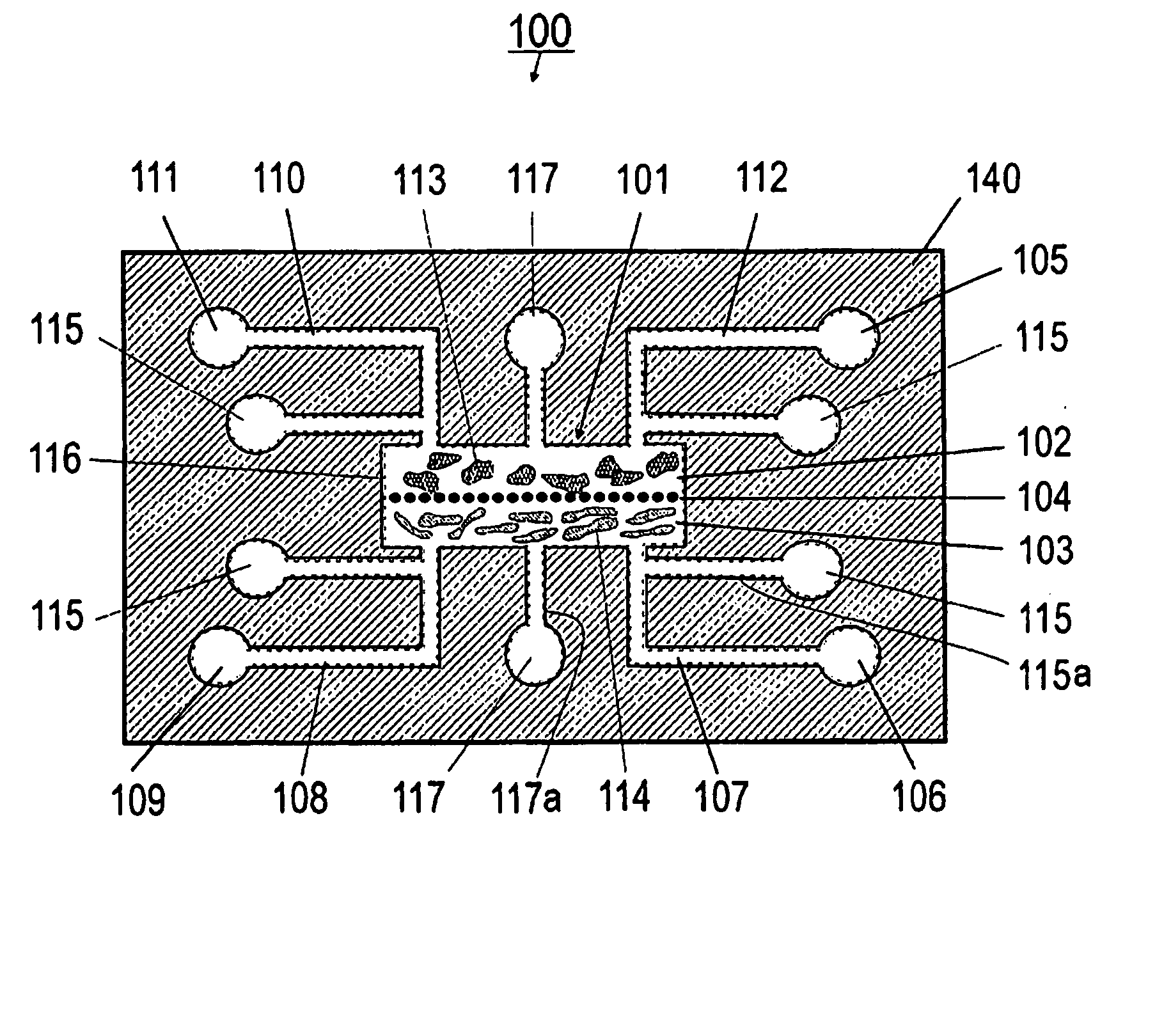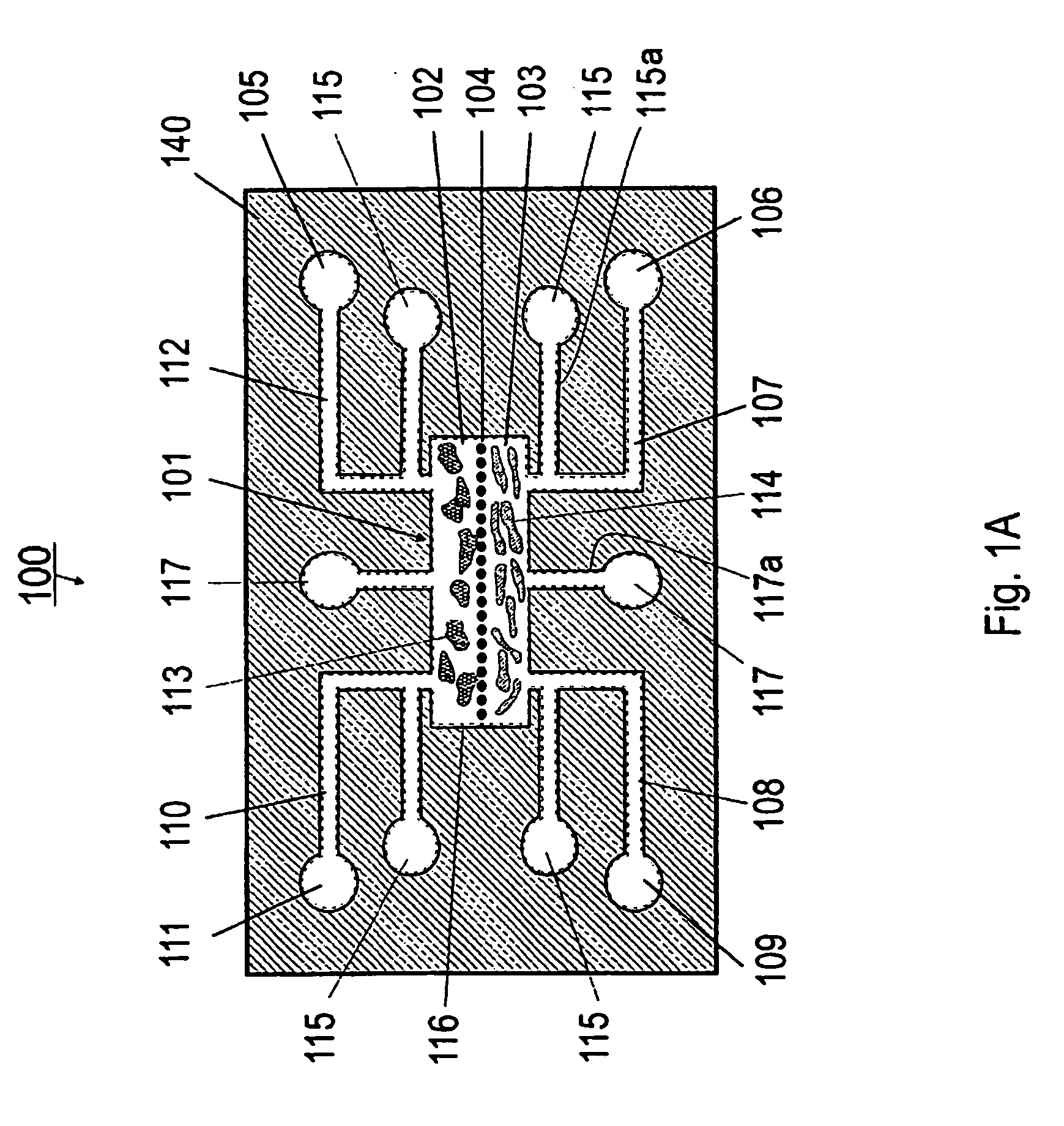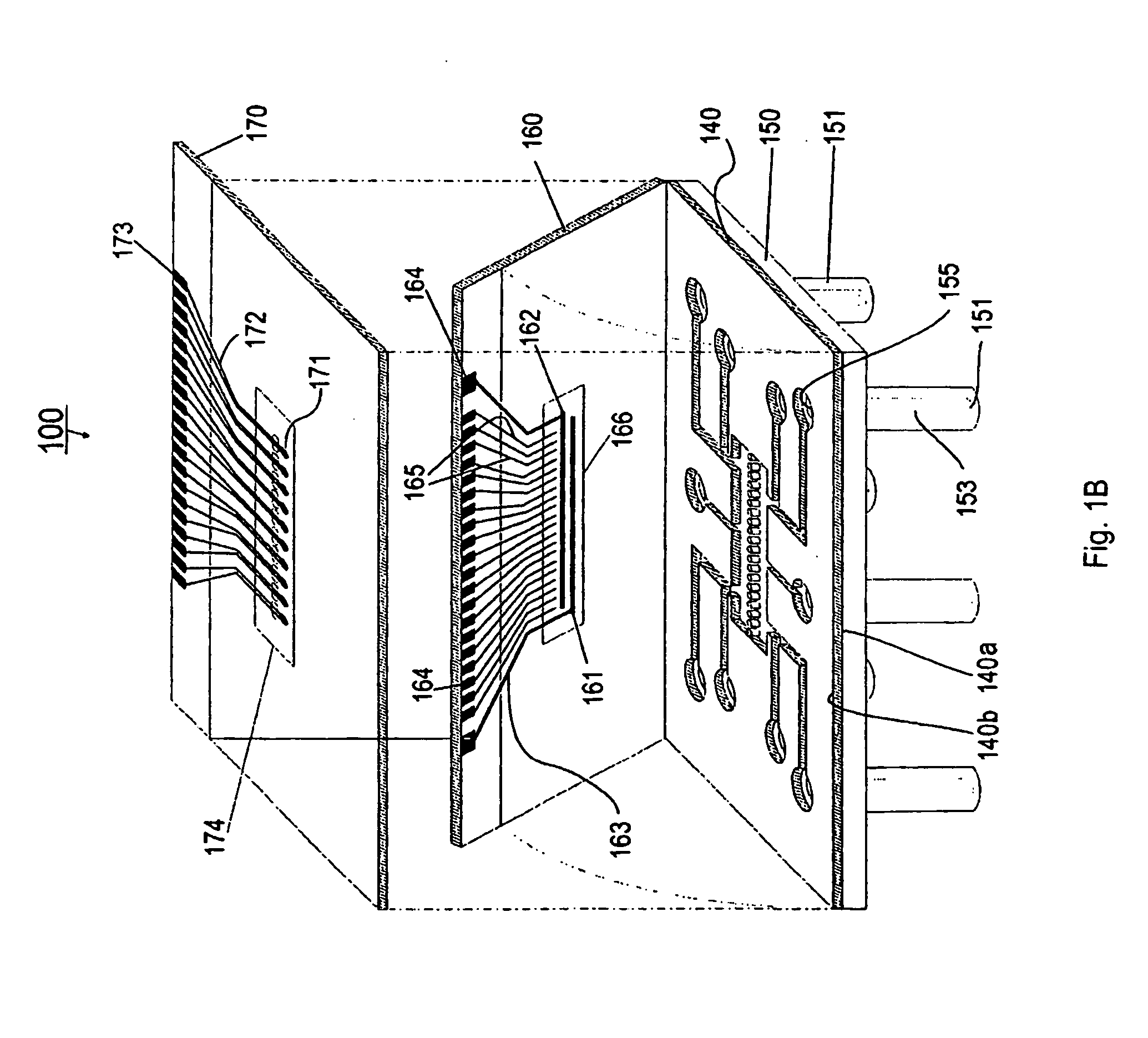Bioreactors with substance injection capacity
a bioreactor and substance technology, applied in the field of living system growth and maintenance, can solve the problems of low productivity, affecting the growth of mammalian cells, and the liquid-gas interface created in some reactor models is particularly damaging to mammalian cells, and achieves the effect of reducing pressur
- Summary
- Abstract
- Description
- Claims
- Application Information
AI Technical Summary
Benefits of technology
Problems solved by technology
Method used
Image
Examples
examples
Bioreactor with One Barrier
[0127] Referring now to FIGS. 1A and 1B, the present invention can be practiced in association with an inventive bioreactor 100 as shown in FIGS. 1A and 1B. In one embodiment, the bioreactor 100 includes a first substrate 140 having a first surface 140a and an opposite second surface 104b, defining a chamber 101 therebetween for receiving cells and a liquid medium. The bioreactor 100 has a barrier 104 dividing the chamber 101 into a first subchamber 102 and a second subchamber 103, wherein the barrier 104 has a porosity to allow the first subchamber 102 and the second subchamber 103 in fluid communication and allow at least one predetermined type of cells to permeate between the first subchamber 102 and the second subchamber 103. The porosity of the barrier 104 can also be chosen not to let any cells to permeate.
[0128] As formed, the first subchamber 102 is adapted for receiving a first type of material such as cells 113 and the second subchamber 103 is ...
PUM
| Property | Measurement | Unit |
|---|---|---|
| area | aaaaa | aaaaa |
| diameter | aaaaa | aaaaa |
| diameter | aaaaa | aaaaa |
Abstract
Description
Claims
Application Information
 Login to View More
Login to View More - R&D
- Intellectual Property
- Life Sciences
- Materials
- Tech Scout
- Unparalleled Data Quality
- Higher Quality Content
- 60% Fewer Hallucinations
Browse by: Latest US Patents, China's latest patents, Technical Efficacy Thesaurus, Application Domain, Technology Topic, Popular Technical Reports.
© 2025 PatSnap. All rights reserved.Legal|Privacy policy|Modern Slavery Act Transparency Statement|Sitemap|About US| Contact US: help@patsnap.com



